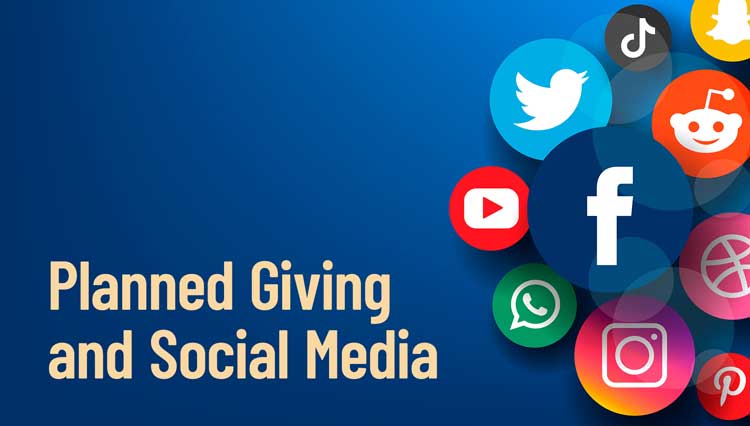Almost everyone in fundraising is using social media these days, from the tiniest hometown nonprofits to the largest multinational organizations. There’s good reason, too: Studies have shown more than 80 percent of adults use social media. And for better or worse, social media has changed the way the world communicates.
But does it make sense for your planned giving program? Maybe … but there are several things to take into consideration first.
ROI Is Not Cut and Dry
The No. 1 enemy of a social media program is figuring out how to monetize it. How do you measure ROI, when — as is the case with planned giving — you might not ‘see’ results for years? That is not a question we can easily answer — at least, not honestly — because it depends on factors unique to your organization.
Will a proper social media presence help spread the word about your mission? Without a doubt. Will it get some people thinking about leaving a legacy gift? Absolutely.
Will it keep the lights on and pay for itself overnight?
Absolutely not.
What’s even more difficult for us is the long answer to our clients to the next question: “Can you help us maintain an effective social media presence?”
The short answer is easy: “Yes, we can.”
But the long answer is more difficult, mainly because it involves a price. And when we tell clients that price is between $5,000 and $250,000, they usually hit the floor.
It Can’t Be That Hard … Can It?
Well, that depends on your definition of “effective” — and “success,” for that matter.
Among the keys to maintaining an effective social media presence are scope, consistency, and planning. And those are determined by your reasons for maintaining that presence in the first place: Is it just to raise awareness? Is it to gain trust? Or are you hoping for another revenue source? Just like any marketing campaign, the reasons behind your social media presence must be carefully weighed for maximum effectiveness.
Here’s a real-world comparison: How much will it cost to hold a company picnic?
Well, that depends on multiple factors: Are you serving Diet Coke or Dom Perignon? Will it be in a public park or the local hoity-toity country club? What’s on the menu? Hot dogs and hamburgers or prime rib and lobster? And finally, how many people do you want to show up before you can call it a success? Between 25 and 30? 50? 100 or more?
So the question is, do you want a prime rib presence, or fast food?
Beware The Pit
The challenge of social media marketing is that it can be a bottomless pit. I recall visiting a cancer research foundation in Dallas 13 years ago. They had two full-time employees (yes, social media is a full-time job) each working 50 hours a week on Social Media. I can’t imagine how much their spend has grown since. Our own company social media budget was $5,000 about six years ago. Now we spend well above $75,000 a year, and could easily spend more.
The point is, planned giving marketing strategies grow and change over time as technologies grow and change. And like anything, you get out what you put in. If you’re inconsistent and only willing to commit a few hours here and there, and refuse to budget for marketing, you’ll never “move the needle.” But at the same time, you need to create a strategy and stick to it. Going overboard and falling into the pit is just as easy as not doing enough.
For us, providing the content is the easy part. We do this day in and day out. But content is only part of the puzzle — and don’t let anyone tell you otherwise. The trick is in executing that content at the right time, engaging the right audience, and achieving your goals — whether that’s on just one social media platform, or multiple.

Dollars and $ense
So, do you really need a social media channel? Perhaps a better question is, “Do you need your OWN planned giving social media channel(s)?”
Many nonprofits have a much-overlooked resource that they can tap into: an existing social media department that already caters to the needs of their overall organization. This is a perfect solution for most planned giving programs. And while those departments are usually extremely busy and overworked, they can work your posts into their overall plan.
You (or an outside vendor, like us) just need to provide content and a timeline for when it should be posted. This is often a win-win for both your department and your nonprofit — it provides your social media folks with ready-made content they don’t even have to think about, and gives you another marketing channel without the expense of starting from scratch.
The truth is, social media isn’t that difficult. It just takes man hours — and that’s what racks up the dollars. There are plenty of vendors who will tell you otherwise, though. They’ll sell you on complicated, expensive, expansive plans full of bells and whistles. Will they get the job done? Perhaps … but at what cost?
The bottom line is, your social media plan has to make sense for your nonprofit — there’s no (effective) one-size-fits-all plan. It has to meet your needs and budget, and it has to inspire your donors and prospects to think they can make a difference.
Anything else is just a waste of time.



